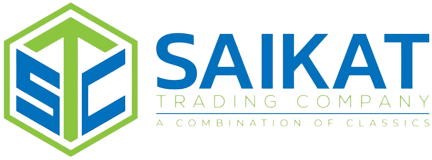Generative artificial intelligence in education: call for evidence Department for Education Citizen Space
Examples of AI applications that you might have come across in everyday life include chat assistants, image recognition, autonomous vehicles, and recommendation systems (for films, music or shopping). AI has the potential to revolutionize various industries, improve efficiency, and solve complex problems. However, it also raises important ethical considerations regarding privacy, bias, and the impact on jobs and society.
If you’re interested in contributing to the conversation, we encourage you to participate in a questionnaire linked at the top of this article. It offers learners the chance to focus on other literacies and transferable skills, while also challenging educators to create more authentic assessments. Authentic assessments are designed to measure students’ knowledge and skills in a way that is relevant to their lives and future careers.
Applications of Generative AI – Reason Behind the Need for Similar Content
Generative AI capabilities include text manipulation and analysis, and image, video and speech generation. Generative AI applications include chatbots, photo and video filters, and virtual assistants. For these reasons, it is important for the public, policymakers, genrative ai industry and the media to have a shared understanding of terminology, to enable effective communication and decision-making. We advise institutions, organisations, and thought leaders to translate expertise into forward-thinking learning and development solutions.
Each of these options requires careful consideration and would likely require us to run and host our own models privately. But it is important regulators are alive to the genrative ai possibilities of innovating with Generative AI. Make the most of our two-decade experience of developing software products to drive the revolution happening right now.
The top five use cases for generative AI for B2B marketing
Deepfakes have already been used to create fake pornographic videos, causing harm to the individuals involved. To give you an idea of the incredible creativity in deepfakes, this TED discussion with AI developer, Tom Graham, provides an overview of the existing deepfake technology available and where it’s heading. AI detectors work by looking for specific characteristics in the text, such as a low level of randomness in word choice and sentence length. These characteristics are typical of AI writing, allowing the detector to make a good guess at when text is AI-generated. These tools can also be used to paraphrase or summarise text or to identify grammar and punctuation mistakes.
- By leveraging generative AI algorithms, insurers can harness the power of automation, personalisation, and enhanced decision-making processes.
- However, new products such as the latest version of ChatGPT and Google’s Bard product are a leap forward in publicly available generative AI tools.
- This can help resourcing professionals filter out candidates who are not a good match for the job and save time and effort in the recruitment process.
Sivasubramanian underscored how all this value for generative AI will be unlocked with AWS—and how AWS customers will bring these AI-powered experiences to life. Like Google, Microsoft rolls its AI data management options in with the security and privacy settings for the rest of its products. Head here to find the privacy options for everything you do with Microsoft products, then click Search history to review (and if necessary delete) anything you’ve chatted with Bing AI about. Essentially, anything you input into or produce with an AI tool is likely to be used to further refine the AI and then to be used as the developer sees fit. With that in mind—and the constant threat of a data breach that can never be fully ruled out—it pays to be largely circumspect with what you enter into these engines.
Founder of the DevEducation project
They can apply this technology to anyone, as demonstrated with Sunny Bates in the audience. In May this year, an AI-generated deepfake image of a bomb at the Pentagon exploding went viral on Twitter and causes US markets to plummet. The S&P 500 stock index fell 30 points in minutes resulting in $500 billion wiped off its market cap. After the image was certified as fake the markets rebounded but it showed the impact that deepfakes can cause. Certified accounts on Twitter didn’t help the situation either as many of them shared the image as if it was real and were rightfully criticised for it.
At the same time, China is working hard to show leadership both on AI investment, home-grown technology and regulation – addressing specific issues such as deep-fakes whilst seeking to minimise social disruption. For example, the Regulations on the Administration of Deep Synthesis of Internet Information Services focus on ‘deep fake’-type use cases as well as generative AI-based chat services. China has also issued for public consultation its draft measures on the administration of generative AI services. These targeted measures sit alongside important regional approaches, notably in Shanghai and Shenzhen.
Support for social media management
Another way to understand a technology’s relevance is to understand how much mind space they dominate – particularly for investors and senior management of companies. More importantly, we think this will continue to show acceleration in the future, as more people realise the potential this technology holds. Powerful data signals from GlobalData, a leading data and analytics, corroborate the above industry view.
For example, AI-powered recruitment software and chatbots can streamline the hiring process, making it easier for people professionals to focus on more strategic tasks and maintain the human touch in their interactions with employees and job candidates. These AI-powered tools automate time-consuming tasks and help HR professionals make better, data-driven decisions. Organisations can achieve many benefits by incorporating AI into the people operations function. As with most tools and technologies, how it’s used will define the outcome – but the shift to natural language interfaces has opened its potential to mass adoption. We’ll have to see how it plays out, but Getty Images and some artists have already taken legal action against companies using image-generating AI for copyright infringement. Google Bard, however, isn’t built on GPT, having been built by Google using their LaMDA family of large language models.
Consideration should also be given to establishing clear and appropriate accountability lines throughout the company up to senior management, and having in place people with the right skills, expertise, experience and information to support and advise. Recruitment, talent pipeline management and staff training will be aspects to consider in planning for effective AI risk management. Processes that exist in other contexts regarding procurement, development, implementation, testing and ongoing monitoring genrative ai of IT systems should be reviewed, adapted and applied as necessary across the roll-out and use lifecycle of a generative AI system. This adaptive governance would need to be sensitive to differences between types of AI systems in order to apply effectively to the changing technology landscape. Organisations should also review how their related processes, including for training, record keeping and audit, would be applied in this context to support any policies, principles and guidelines.

